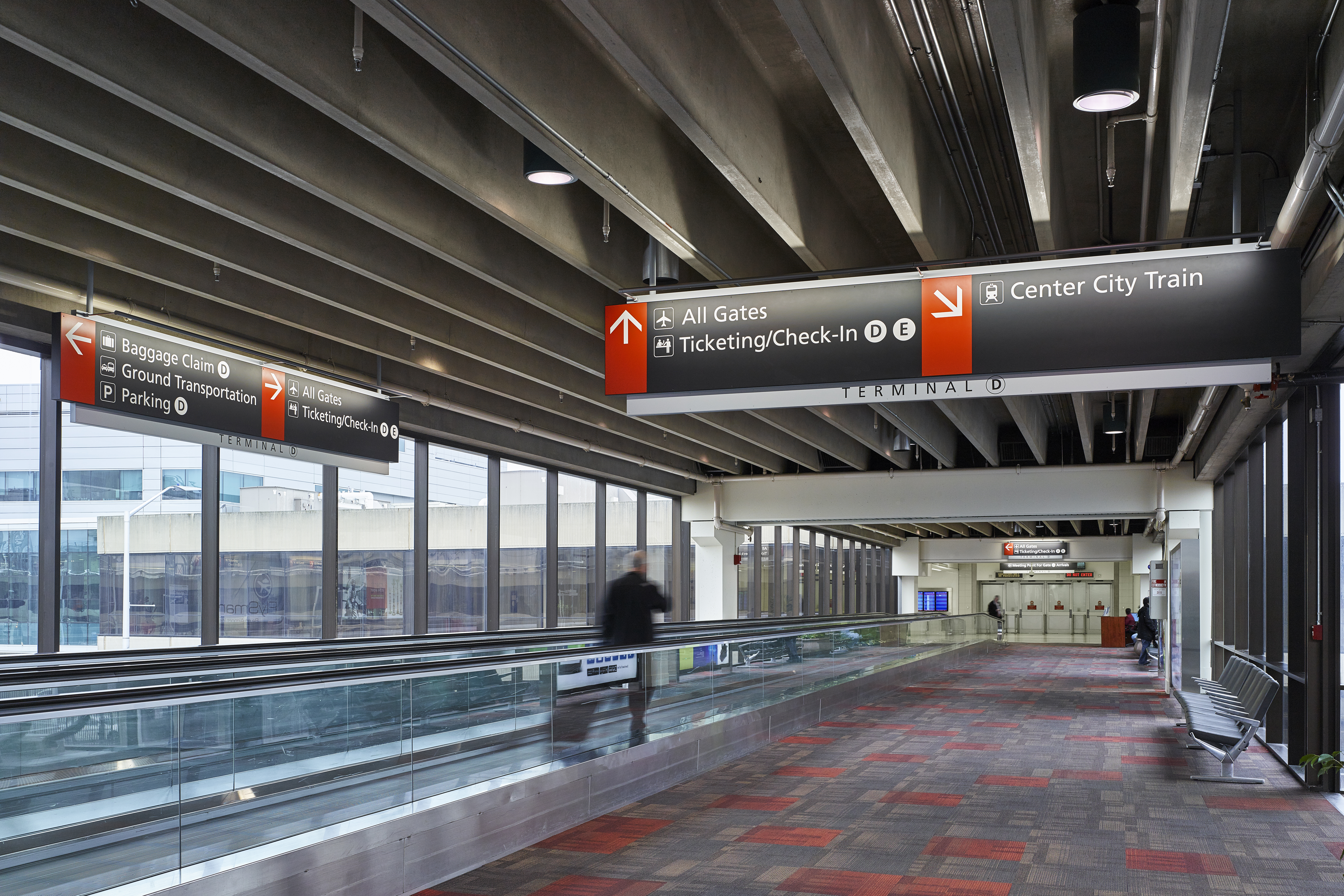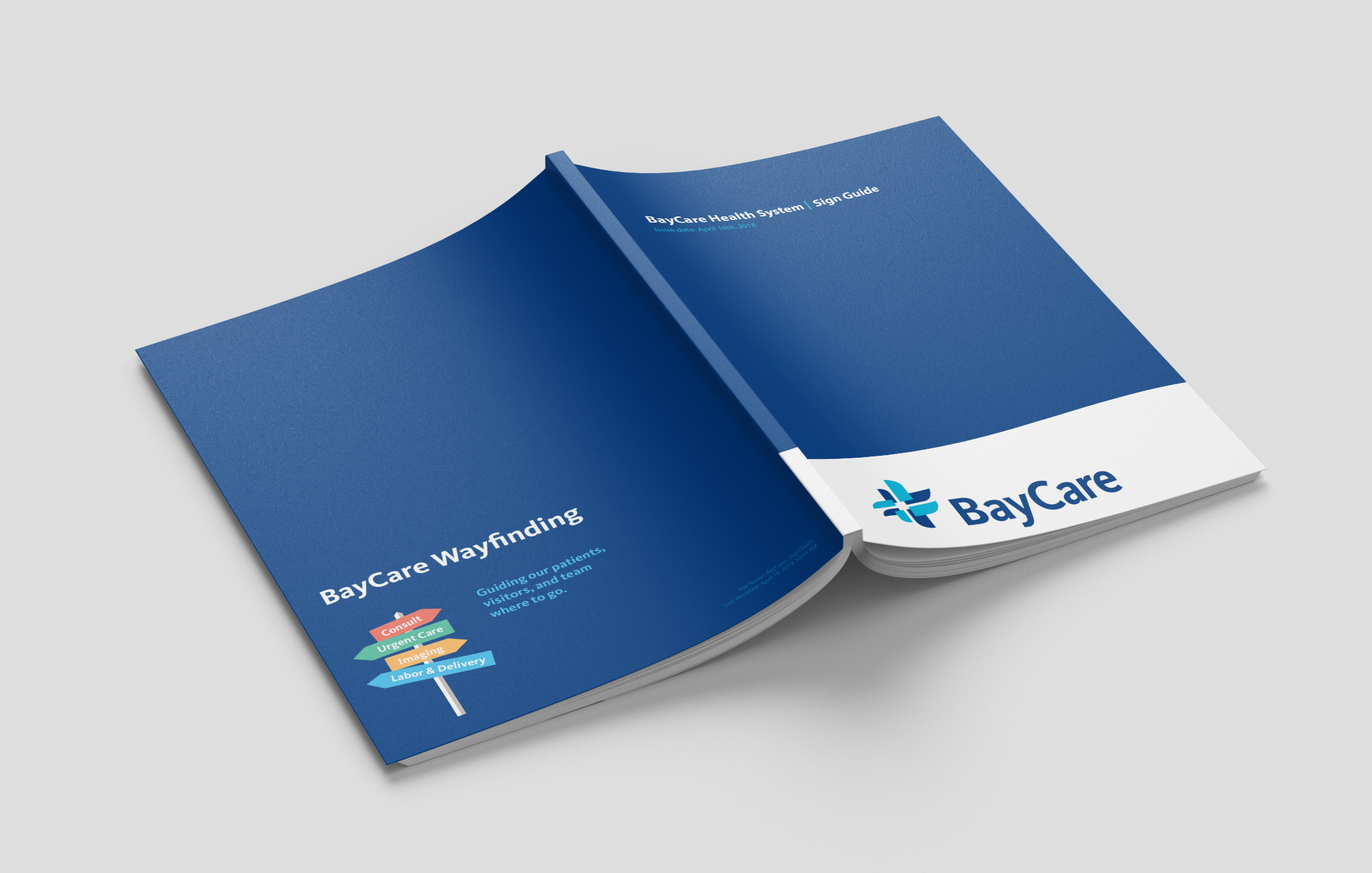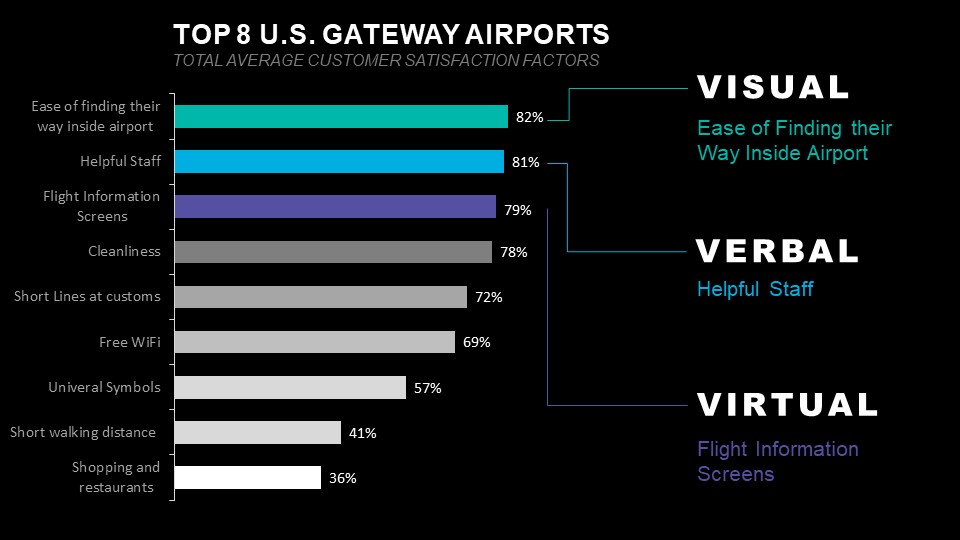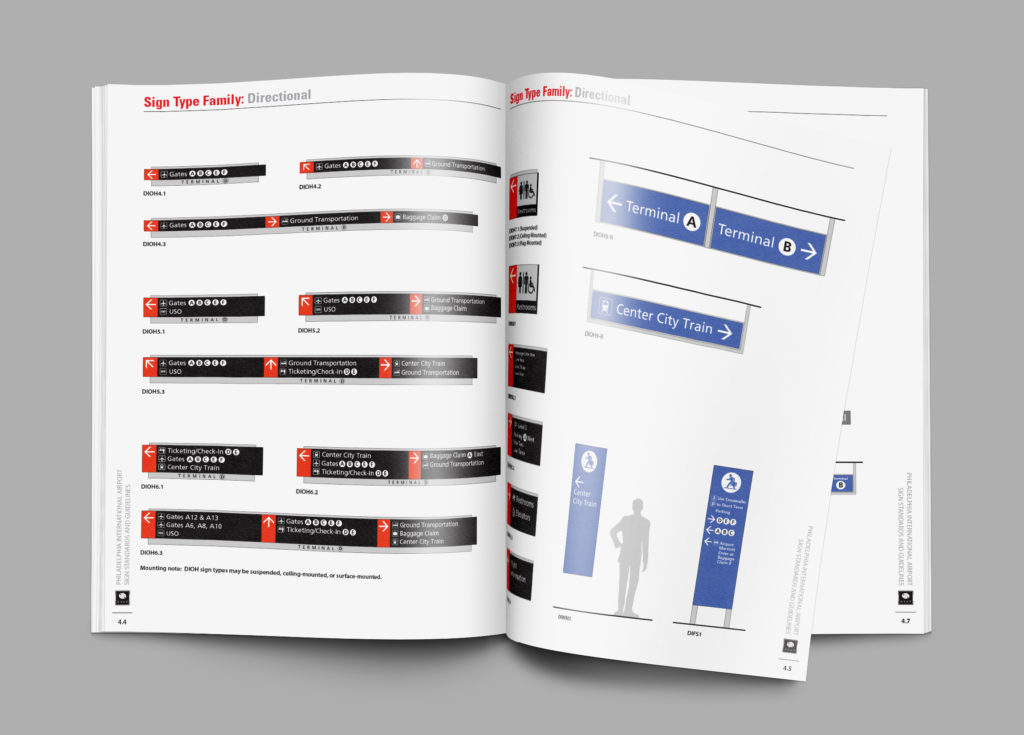
Fact: no one likes being lost. It causes confusion, anxiety and stress. This is no way to treat your customers, patients and passengers, and that is why wayfinding is vital.
Good wayfinding starts from a place of research-backed logic, which guides the successful implementation of a signage program and helps maintain the integrity of the system moving forward. This wayfinding logic needs to be documented in a set of sign standards to help guide all future signage projects as well as sign maintenance. A comprehensive wayfinding program is a substantial investment, and having a well-prepared set of sign standards in place is one of the best ways to safeguard the longevity and success of our clients’ investments.
But what exactly are sign standards and why do they matter? I recently had the opportunity to explore that question with my colleagues Jim Alderman and Glenn Davis. In today’s post, I share some highlights of that conversation.
Jim Harding (JH): How would we explain sign standards and what they entail to the layperson?
Jim Alderman (JA): Think of sign standards as an owner’s manual, rulebook, cookbook and roadmap, all rolled into one. Sign standards is a collective term for the documentation of a sign program in a format that allows our client to maintain and expand the program over time, while preserving the integrity and consistency of the basic design intent. Sign standards typically include selection and usage guidelines for sign types, written descriptions and drawings for all the sign types in a project sign family, program management and maintenance requirements, and ordering procedures.


JH: Why is it important to create sign standards?
Glenn Davis (GD): By documenting and publishing approved sign standards, we provide our clients with an effective management tool, which can result in cost savings by giving them guidelines for future signage. If a sign program is executed in accordance with a set of sign standards, there will be less need to make costly corrections down the line to fix signage has become disjointed.
JA: I agree. A sign program is a valuable asset, and standards are a tool to manage that asset. Sign standards help prevent an airport’s signage system from becoming disorderly and difficult for passengers to use and the costs associated with fixing a disjointed system. Our wayfinding and signage upgrade project at Philadelphia International Airport (PHL) is a good example of dealing with this type of issue. It was a major undertaking because the airport hadn’t applied consistent standards across various signage programs, which, over time, resulted in a visually cluttered and confusing environment with some serious wayfinding problems.
JH: Sign standards also have an impact on the passenger experience. Research has shown that happy customers spend up to 64 percent more than unhappy customers, so the goal is obviously to maintain a high level of customer satisfaction that ultimately impacts the airport’s bottom line. Combined with proof from Gresham Smith research that wayfinding is at the top of the list of customer satisfaction factors, the sign standards are an essential part of the equation.
GD: Gresham Smith was the lead investigator for ACRP Report 52, which is really the mother of all sign standards. We also contributed to Report 161 and most recently authored Report 177. What are some key takeaways from this combined research?
JH: Part of our research included surveying passengers about their airport experience, and the feedback we received highlights the significance of good wayfinding. It also gave us clues as to what is important for successful wayfinding, particularly in terms of presenting the various types of information and in certain ways. Part of wayfinding logic is making sure that signage addresses “the 3V’s” of communication: visual, verbal and virtual. Using a methodical, logical approach the types of information and how it is presented is critical—not just for the implementation of a new signage program but for the continuity of an existing one.
Customer satisfaction findings from ACRP Report 161 illustrate how important wayfinding is to the passenger experience as well as visual, verbal and virtual information that helps support strong wayfinding.
JH: I think of sign standards as a type of wayfinding bible. What are some of the key components in creating great standards and best practices?
JA: Effective sign standards have several things in common—they are supported by solid wayfinding logic and are easy to understand and use; they explain the sign program as an interconnected whole, not just a collection of unrelated pieces; and they accommodate the expansion and addition of new elements. Our work at PHL focused on clarity, visibility and consistency with this project, as well as the underlying wayfinding logic. Our new design simplified the design and introduced a visual grid to ensure a consistent look from sign to sign. We also established standards for text height and terminology for all destination areas and services, all of which were a vital part of the resulting PHL Sign Standards and Guidelines.
PHL’s sign standards offer guidance on signage types.
JH: I am often asked what defines successful sign standards and how do we know if they are successful…
GD: I think that successful wayfinding standards provide clear guidance on the conveyance of information visually. They should also provide some flexibility and allow for continued growth within a sign standards package. That is why outlining the logic behind the system in a set of standards is key. If you adhere to sound logic, you will still have flexibility. This also allows companies to extend the guidelines beyond even their initial intended purposes. For instance, in healthcare if you design for a hospital, but can export those guidelines to other healthcare settings such as medical office buildings or freestanding EDs, you’ve increased your ROI and reinforced the brand. From the end user’s point of view, you’ve communicated the message of quality care throughout the healthcare network. Additionally, these guidelines go beyond nuts and bolts – the font height or color scheme – to establish a policy that aligns decision-makers.

Wayfinding guidelines for BayCare helps align the health system to present a consistent brand.
JA: To your point, Glenn, our San Francisco International Airport study included a policy for the coordination of all visual elements, including wayfinding, advertising, artwork, concessions, retail, dynamic displays, airport marketing and branding. Each of these elements tend to compete in the built environment, so by having a policy you create visual harmony. But most importantly, as with any tool, you know you’ve developed successful sign standards if they get used. Standards that are easy to use and understand and provide clear guidance for all users, whether they have previous experience with a sign program or not, are the ones that continue to be successful.

SFO’s guidelines help organize visual elements at the airport.

